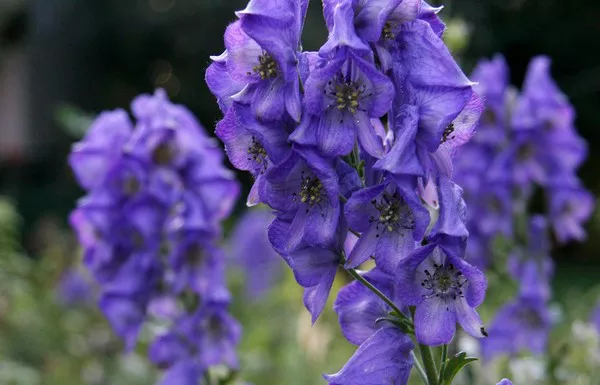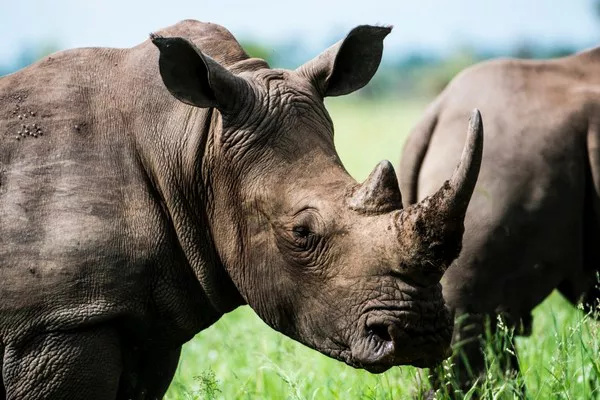While the botanical world is often associated with beauty, serenity, and healing properties, it also harbors a sinister side. Some plants have evolved to possess lethal toxins, intricate defense mechanisms, or harmful compounds that can pose serious threats to humans and animals. In this exploration, we will delve into the top 10 most dangerous plants in the world, examining the unique characteristics that make them hazardous and the potential consequences of encountering them.
Top 10 Most Dangerous Plants in the World
1. Aconitum (Aconitine spp.)
Also known as wolfsbane or monkshood, Aconitum is a genus of flowering plants that conceals a potent neurotoxin. Found in mountainous regions of the Northern Hemisphere, these strikingly beautiful flowers are deadly to both humans and animals. The plant contains alkaloids, such as aconitine, which affect the nervous system, leading to symptoms like nausea, vomiting, convulsions, and cardiac arrest. Handling or ingesting any part of the Aconitum plant can prove fatal, emphasizing the importance of recognizing its distinctive blue-purple flowers and lobed leaves.
2. Ricinus communis (Castor Bean Plant)
The castor bean plant, with its large, palmate leaves and attractive red spikes, belies its deadly nature. Native to Africa, Ricinus communis produces ricin, one of the most toxic substances known. The seeds contain the highest concentration of ricin, and even a small amount can be lethal. Ricin disrupts protein synthesis in cells, leading to organ failure. While castor oil, derived from the plant’s seeds, is safe for use, ingesting or mishandling the raw seeds can have dire consequences.
3. Nerium oleander (Oleander)
Oleander, prized for its vibrant, fragrant flowers, is a common ornamental shrub in warm climates. Native to the Mediterranean region, Oleander contains toxic cardiac glycosides that affect the heart. Ingesting any part of the plant can result in symptoms such as nausea, vomiting, abdominal pain, heart irregularities, and, in severe cases, death. Despite its dangers, Oleander is sometimes involved in accidental poisonings due to its widespread cultivation.
4. Atropa belladonna (Deadly Nightshade)
With its bell-shaped purple flowers and dark, shiny berries, Deadly Nightshade exudes an eerie allure. Native to Europe, this plant contains tropane alkaloids, including atropine and scopolamine, which can lead to hallucinations, seizures, and death. Ingesting even small amounts of Deadly Nightshade can be fatal, making it a historically notorious poison. Recognizing its distinctive appearance is essential for avoiding accidental contact.
5. Digitalis purpurea (Foxglove)
Foxglove, characterized by its tall spikes of tubular flowers, contains cardiac glycosides that can affect the heart’s rhythm. While Digitalis has been used medicinally to treat heart conditions, the plant has a narrow therapeutic window, and ingestion can lead to symptoms such as nausea, confusion, and potentially fatal heart arrhythmias. Proper dosing and medical supervision are crucial when utilizing Foxglove for medicinal purposes.
6. Hydrangea macrophylla (Hydrangea)
Commonly cultivated for its large, showy flower heads, Hydrangea conceals a toxic secret. The plant contains cyanogenic glycosides, which release hydrogen cyanide when ingested. While accidental ingestion is generally low-risk, especially due to the plant’s unappealing taste, it serves as a reminder that even seemingly harmless ornamental plants can harbor hidden dangers.
7. Nux vomica (Strychnos nux-vomica)
The seeds of the Strychnos nux-vomica tree, also known as nux vomica, contain the alkaloids strychnine and brucine. Native to Southeast Asia, this tree has been historically used as a poison. Ingesting the seeds can lead to violent convulsions, respiratory failure, and death. While its use as a poison is now largely obsolete, accidental poisonings can occur if the seeds are mistaken for edible nuts.
8. Nepenthes (Pitcher Plants)
While pitcher plants, belonging to the Nepenthes genus, are known for their unique carnivorous nature, some species can pose a threat to small animals and insects. The pitcher-shaped leaves of these plants contain digestive fluids that break down captured prey. While generally harmless to humans, larger species of Nepenthes have been known to capture and consume small vertebrates. Careful handling and awareness of the plant’s carnivorous nature are crucial.
9. Dieffenbachia (Dumb Cane)
Dumb Cane, a popular ornamental plant with large, variegated leaves, harbors oxalate crystals that can cause intense burning and swelling if ingested or comes into contact with the skin. The crystals release oxalic acid, leading to irritation and potential injury. While fatalities are rare, exposure to the sap of Dumb Cane can result in painful symptoms, making it important to handle the plant with care.
10. Urtica dioica (Stinging Nettle)
Found in many regions around the world, Stinging Nettle is known for its fine hairs that release irritating substances upon contact. These hairs inject histamines and other chemicals into the skin, causing a painful, stinging rash. While not lethal, contact with Stinging Nettle can result in discomfort and allergic reactions. Despite its stinging reputation, the plant has culinary and medicinal uses when properly processed.
Conclusion
The world of dangerous plants is as diverse as it is fascinating, with each species showcasing unique adaptations and potent defenses. While the allure of ornamental plants and the potential medicinal properties of certain species are undeniable, it is crucial to approach these botanical wonders with knowledge and caution. Understanding the risks associated with the top 10 most dangerous plants in the world empowers individuals to appreciate the beauty of nature while avoiding potential harm. As we navigate the botanical realm, a combination of awareness, respect, and responsible handling ensures a harmonious coexistence with these fascinating yet perilous plants.
You Might Be Interested In:


























